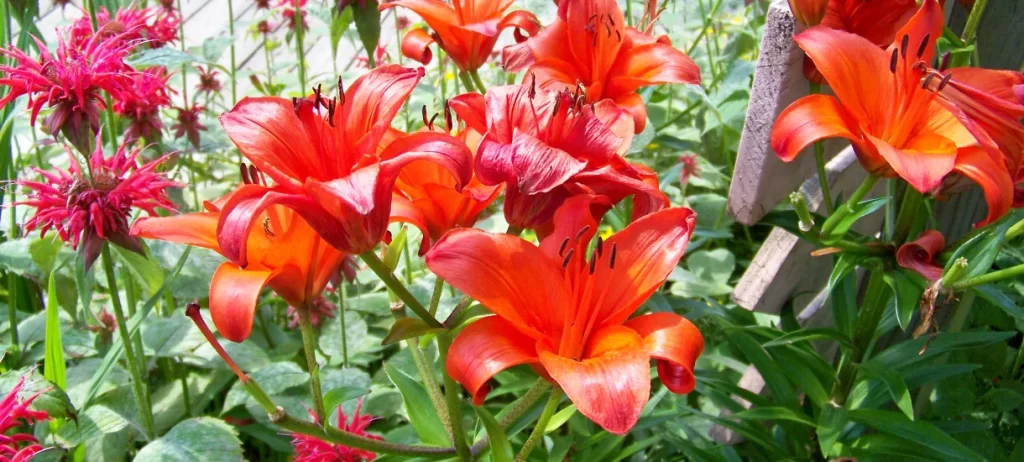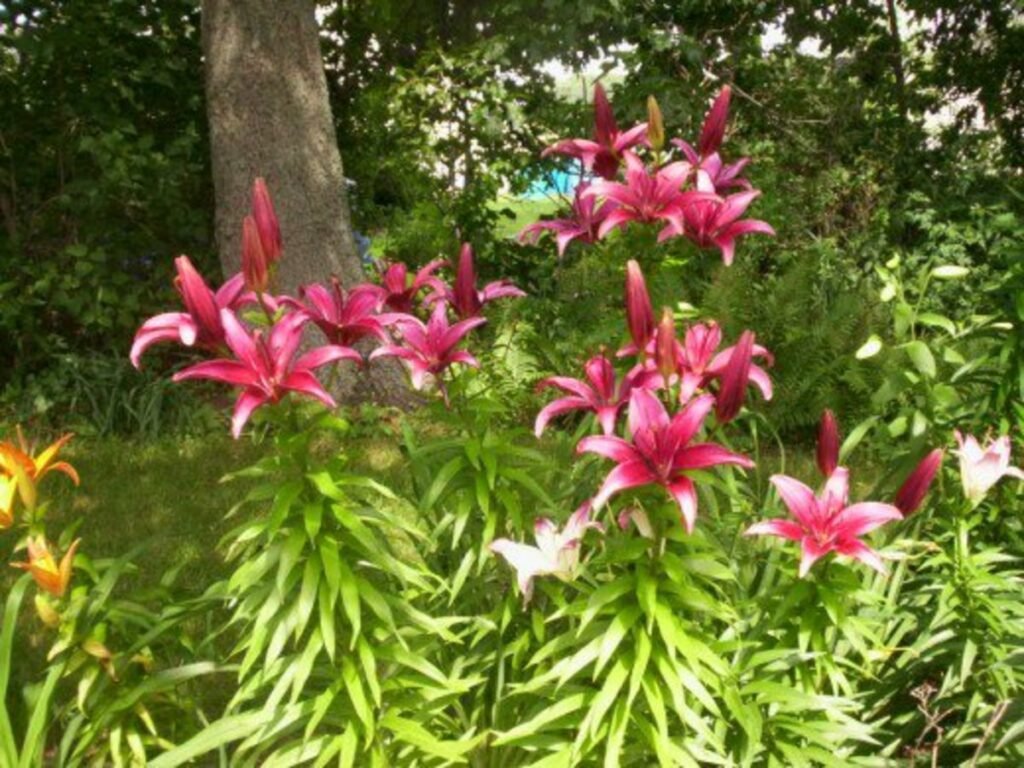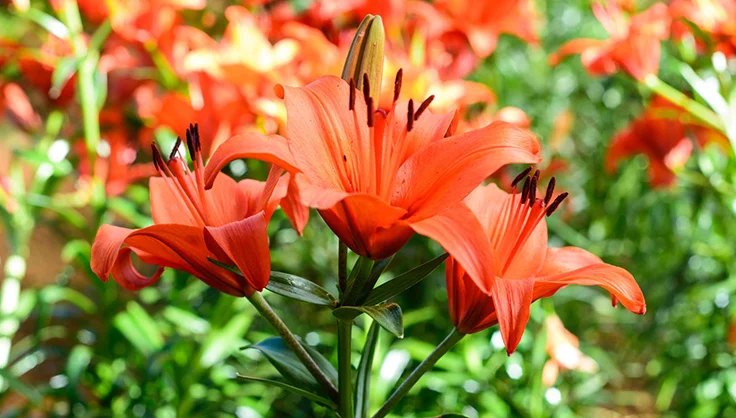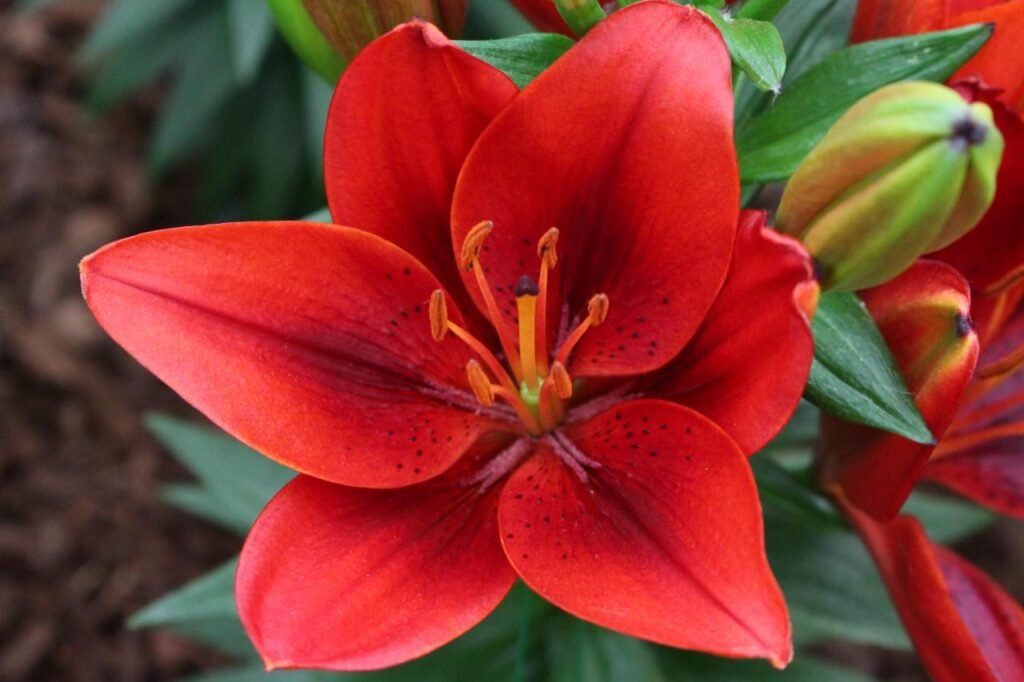The Asiatic lily makes an ideal plant for panorama layout. One of the hardiest and maximum popular kind of lilies grown, this genuine lily when planted effectively, produce long-lasting flora.
Planting Asiatic lilies within the landscape provides the earliest lily bloom. Asiatic lily care is easy when you’ve learned how to develop Asiatic lilies. The mystery to stunning, lengthy-lasting blooms is gaining knowledge of the right way to plant Asiatic lilies.
You can know about more varieties of lily- Grand Crinum Lily, Amaryllis Lily, Waterlily, Lily, on Flowerworld.in
You can also follow us on Facebook & Instagram
How to grow & care Asiatic lily
In this paragraph we tell you how to grow and care asiatic lily & what are the tips. Follow the given below.
Scout for a vicinity and put together the soil in advance of time while planting Asiatic lilies. Information about the Asiatic lily advises planting in a sunny to partly sunny place. At least six hours of sunlight is vital for the Asiatic lily plant.
Soil ought to be well-draining, which may additionally require the addition of organic cloth labored in several inches (eight cm.) deep. If you already have rich, organic soil in the area wherein you’ll be planting Asiatic lilies, ensure it’s miles free and properly-draining 6 to eight inches (15-20 cm.) deep. Bulbs of this lily must in no way sit in soggy soil.
The bulbs of Asiatic lilly plant life appear large – five″ to six″ inches across – normally white together with a tint of purple. The bulb shade plays no part in flower coloration. Lily bulbs while harvested regularly look pinkish after exposure to direct daylight. The huge bulbs store a whole lot of meals giving them plenty of flower power in the spring, despite sub-par soil, water and slow-launch fertilizer.

Planting
Work up sandy or clay soil by way of adding natural, well-composted materials. Peat moss, sand, or straw blended into the beds earlier than planting Asiatic lilies improves drainage. Soil must drain properly but keep moisture to nourish the growing lilies. Information approximately the Asiatic lily says they pick soil to be barely acidic as nicely.
Plant those bulbs in fall, a few weeks earlier than the winter brings freezing temperatures. This lets in a terrific root gadget to increase. Bulbs of the Asiatic lily must have the winter relax to supply massive blooms.
Plant the bulbs three instances as deep because the height of the bulb, with the flat end down, then mulch lightly to preserve moisture. In spring, plant short annuals across the lily bulbs to color them. Place in a region far from surfing deer; Asiatic bulbs are fit to be eaten and deer will do just that if given a chance.

How to care Asiatic Lily
Fertilize your plantings for optimum bloom. If you have got observed the stairs above, the natural depend in the soil gives your flora a terrific begin. You can top dress with sluggish-launch fertilizer as nicely, or feed in early spring with fish emulsion, worm castings, compost tea, or a nitrogen plant food. When buds appear on the Asiatic lily, feed with a excessive phosphorus food, or bone meal, to make blooms bigger and remaining longer. Fertilize in limited quantities, as too much fertilizer, even the natural sorts, can create lush inexperienced foliage and restriction blooms. Proper care of your Asiatic lily bulbs goes a protracted way in developing a beautiful display.
Pests & Disease of Asiatic lily
Asiatic lilies find themselves liable to fungal infection and aphids. To remove aphids on Asian lilies and make certain your plants stay aphid free, use neem spray oil insecticide, summer season oil or Malathion.
Also, use fungicides which include green shield, bravo or a baking soda fungus spray via mixing 1 tablespoon of baking soda in liters of warm water for fungal infection.

Uses of Asiatic lily
The stems of Asiatic lilies make first-rate cut vegetation to be used in floral arrangements. When the buds open the blooms lasts for several days up to several weeks. Grow them as ground covers or in blended perennial lawn borders along different woody shrubs and flowering perennials.

